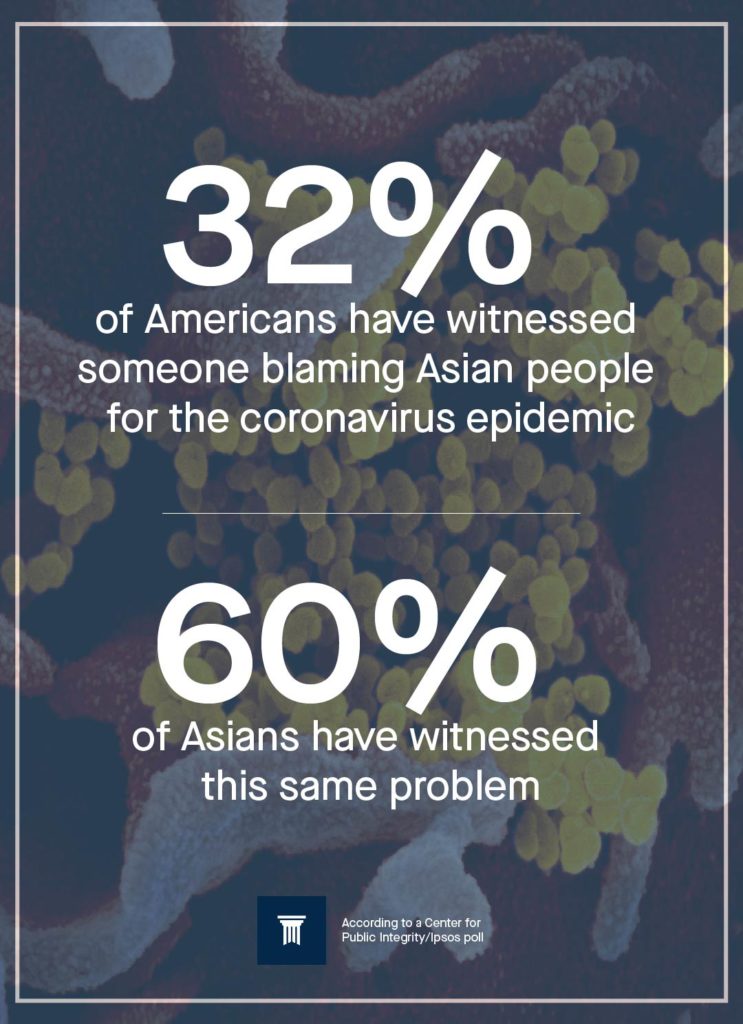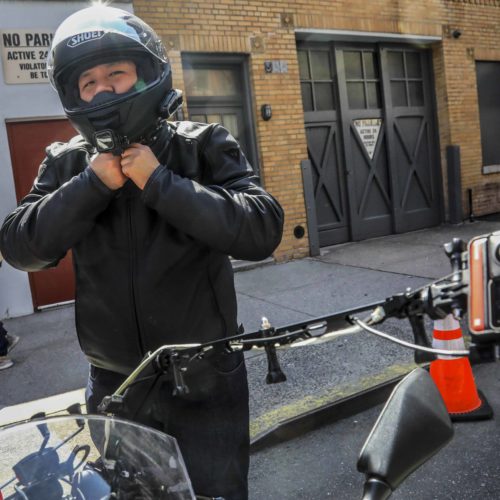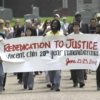This article was published in partnership with NBC News.
Introduction
More than 30 percent of Americans have witnessed someone blaming Asian people for the coronavirus pandemic, according to a new Ipsos survey conducted for the Center for Public Integrity.
Sixty percent of Asian Americans, who made up about 6 percent of the survey’s respondents, told Ipsos they’ve seen the same behavior.
The poll, released Tuesday, comes as advocacy groups and researchers report an alarming rise in anti-Asian discrimination. Stop AAPI Hate, an effort to track these cases, reported about 1,500 instances of harassment against Asian Americans in a one-month period since mid-March.
“We’re already seeing an increase in physical assaults, refusal of service and vandalism,” said Cynthia Choi, co-executive director of Chinese for Affirmative Action, a San Francisco-based civil rights organization helping to run the tracking effort, “despite the fact that 95 percent of Americans are sheltering in place.”
Choi worries about what will happen when shelter-in-place orders are lifted and more people interact on subways, in workplaces and elsewhere. “We are preparing for worst-case scenarios,” she said.
Serious incidents of violence have already occurred, in one of which a man is accused of stabbing an Asian American family, including two children, at a Sam’s Club in Texas in March. By mid-April, the New York City Police Department was investigating 11 coronavirus-related hate incidents, one of which left a woman needing stitches after she was hit on the head with an umbrella while people yelled anti-Asian insults at her.
The surge in anti-Asian bias may reflect a growing tendency to blame certain groups for the pandemic, according to Chris Jackson, the head of public polling at Ipsos, who ran the survey of 1,001 adults. The survey has a “credibility interval,” a way of measuring its precision, of plus or minus 3.5 percentage points.
While a narrow majority of poll respondents described the virus primarily as a natural disaster, 44 percent said specific people or organizations were responsible. Of those respondents, nearly two-thirds mentioned China or Chinese people.
“The majority of people — a bare majority, but a majority — are still viewing the pandemic as a natural disaster,” Jackson said. “We’ve not asked this particular question before, but we’ve asked similar questions, and that number is coming down. Earlier on, there was a much larger number of people who viewed it as a natural disaster.”
The poll found a partisan divide. Sixty percent of Republicans said the virus was caused by specific people or groups, almost double the share of Democrats who said that.

This reflects an intentional 2020 election effort.
The National Republican Senatorial Committee sent a memo directing campaigns this month to blame China when asked about failures in the Trump administration’s response to the pandemic. “Don’t defend Trump, other than the China Travel Ban — attack China,” says the memo, first reported by Politico.
President Donald Trump and other Republican politicians have repeatedly referred to COVID-19 as the “Chinese virus.”
“I think the Republican strategy is to deflect blame and scapegoat and rile up their base,” said Russell Jeung, a professor of Asian American studies at San Francisco State University who is also involved in the Stop AAPI Hate tracker. “A clear consequence of using terms like ‘Chinese virus,’ of making China the central campaign strategy, is putting Asian American lives at risk.”
In open-ended responses to the poll, many people simply blamed “China,” leaving it unclear whether the blame was leveled at the Chinese government or at Chinese and Asian people more broadly.
Jeung said that it was fair game to criticize foreign governments for their responses to the pandemic but that Americans should also look to the failures of their own government. Politicians have a responsibility to denounce hate and racism, he said.
Charissa Cheah, a professor of psychology at the University of Maryland, Baltimore County, is researching anti-Asian bias during the pandemic. She said she is not sure that people make a clear distinction between criticism of Chinese leaders and criticism of people with Asian ancestry.
“Many of these implicit assumptions are done without thought,” she said.
The tendency to blame China is particularly notable, she said, because researchers have found that most COVID-19 cases in New York were imported from Europe, not Asia.
Anti-Asian bias amid the virus’ spread plays into a long history of racism in the United States that has associated immigrant groups with disease, Cheah said. But while some immigrant groups, such as those from European countries, were later assimilated into an identity as white Americans, people with Asian ancestry keep finding their status as Americans questioned.
“They fall very quickly from model minority to yellow peril,” she said. “Asian Americans are considered perpetual foreigners. It doesn’t matter how many generations you’ve been here. You’re always asked, ‘Where do you come from?'”
Community spread within the U.S. dwarfs the risk of exposure from outside travel. But the Ipsos/Public Integrity poll results suggest that a minority of people see Asian Americans as disease risks.
One out of 4 people said they would be concerned about coming into close contact with someone of Asian ancestry in public, a share that jumped to 46 percent if the person was not wearing a face covering or other protective gear. Respondents were far more likely to express concern about encountering someone of any ethnic background who is coughing (94 percent), not wearing protective gear (79 percent) or elderly (56 percent).
To Jackson, the Ipsos pollster, that suggests that the lion’s share of Americans see outward signs of disease or lack of protection — not ethnicity — as a risk factor. The trouble, he said, is that a small number of racists motivated to take action can cause serious damage.
“Virulent racism isn’t a mass phenomenon,” Jackson said. “But among Republicans particularly, there is an environment where blaming China or blaming the Chinese people is acceptable, and that is an environment that fosters more extreme acts.”
The federal government has done little to combat a rise in hate crimes during the pandemic. The Centers for Disease Control and Prevention swiftly launched a team to combat discrimination during the outbreak of severe acute respiratory syndrome in 2003, but the agency has announced no such measures for COVID-19. The Justice Department has not said whether it is planning anything like its quick response to the backlash that affected Americans of South Asian and Middle Eastern ancestry after the terrorist attacks of Sept. 11, 2001.
That leaves a critical gap. But bystanders can play a crucial role in combating hate, experts said.
People’s level of prejudice is directly correlated with their perception of what is socially acceptable, said Mina Cikara, an associate professor of psychology at Harvard University: “Social norms are incredibly powerful in terms of driving attitudes.” Denouncing violence, or publicly supporting the victim of harassment, sends a strong signal.
The consequences of not intervening could be severe. All it takes, Cikara said, is “a couple of awful people to do awful things.”
Read more in Health
Coronavirus and Inequality
Senators to DOJ: Do something about the rise in Asian hate
A letter sent to the department’s Civil Rights Division cites a Center for Public Integrity report
Coronavirus and Inequality
New bill attempts to ensure people with disabilities get equal ventilator access
Following Center for Public Integrity investigation, Sen. Ben Sasse writes bill aimed at preventing disability discrimination during the coronavirus pandemic




Join the conversation
Show Comments